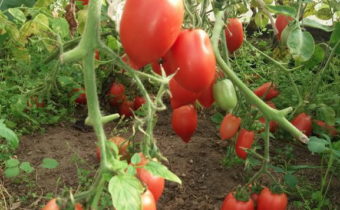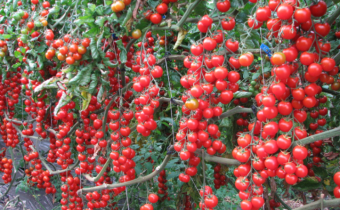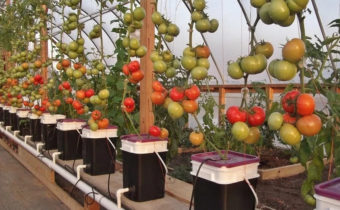Tomato "Ultra Early F1" - for those who love a stable harvest
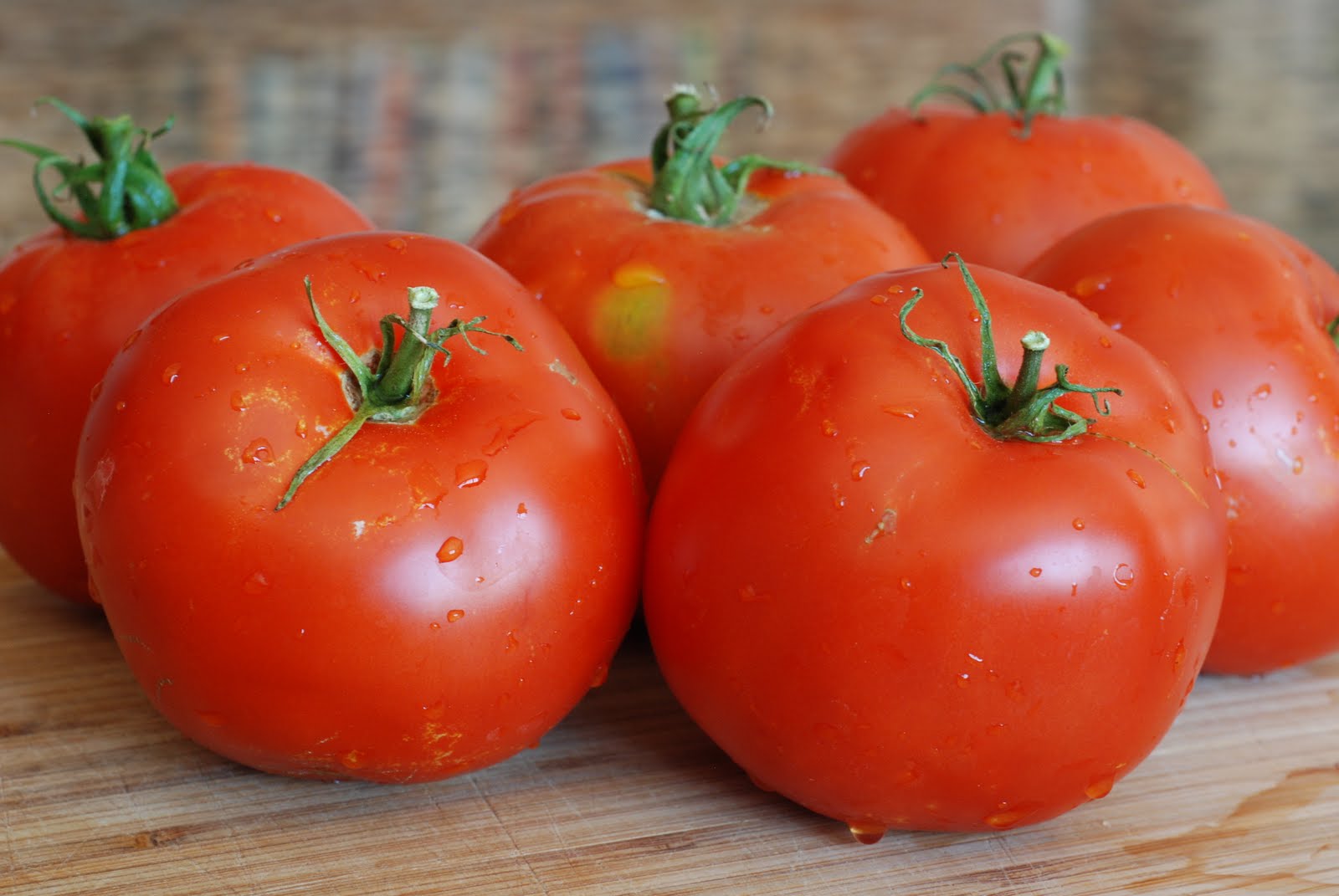
Tomatoes are subdivided by maturity into early, medium, late. And if in the northern regions more often grow medium and late tomatoes in greenhouses to obtain a guaranteed yield, then the ultra-early varieties of tomatoes can be grown there in the open ground, while collecting good, stable yields.
Ultra-ripened varieties of tomatoes are great for cold zones, not to mention the middle zone and the south of Russia. On average, the fruits of such tomatoes ripen in 50-70 days, which is very important for unstable climatic conditions in areas of high-risk farming. Ultra-fast-growing varieties, in principle, are not afraid of the vagaries of the weather, they still have time to mature. The variety of tomatoes Ultra Early F1 is one of this superearly tomato family.
Characteristics and description
Tomato Ultrafast F1 is more suitable for cultivation in greenhouses, although it gives excellent harvests under the open sky. The properties and characteristics of this variety attract gardeners who want to get their early tasty tomatoes to feast on them.
 What distinguishes the tomato Ultra Early F1 will help determine the characteristic and description of the variety.
What distinguishes the tomato Ultra Early F1 will help determine the characteristic and description of the variety.
Description of the bush:
- determinant, ultra-early variety - tomatoes ripen 70 days after planting;
- Bushes of a standard tomato are strong, stocky, up to 55-70 cm high;
- Ultra early F1 perfectly adapts in any climatic zones, successfully fructifies both in open and closed ground;
- cold-resistant: resistant to low temperatures and short-term frosts;
- Ultrafast F1 stands out for its high yield: from one bush you can collect about 2 kg of excellent tomatoes;
- this tomato attracts with its unpretentiousness;
- distinguished by resistance to diseases characteristic of tomatoes;
- on each brush 7-8 ovaries are formed;
- he is a low-growing variety, however, he needs a garter because of the large number of fruits, which by their gravity tend it to the ground;
- Siberian breeders have developed this variety for cultivation in the northern regions in greenhouses, but it grows well and gives rich yields in the open field.
Fruit Description
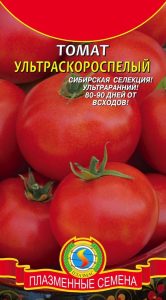
- Ultrafast F1 tomatoes ripen on average to 100 g or more;
- the form is roundish, leveled;
- color is rich red;
- the pulp is fleshy, dense, there are few nests;
- contains the average amount of dry matter;
- the skin is glossy, dense;
- sweet taste;
- universal purpose: great for whole canning - the skin does not crack as a result of heat treatment, the tomato tastes great in fresh salads, it makes delicious juices, sauces, ketchups, etc.
Disease and Pest Resistance
- due to its ultra early ripening, tomato Ultra-ripening F1 is not affected by blight;
- resistant to diseases typical of tomatoes;
- almost no time to undergo an invasion of pests, successfully saved in case of applying standard pest control methods - spraying with insecticides or herbal infusions (from wormwood or potato tops).
See also: Tomato yield "Marina Grove F1": proper care of the plant
Advantages and disadvantages
Like all very early varieties, Ultrafast F1 has almost no flaws, unless it requires tying up, despite its short stature, but you need to tie it up because heavy brushes with ripe fruits tend the bush to the ground.
This tomato has several advantages:

- early maturation;
- almost simultaneous ripening tomato;
- tomato is absolutely unpretentious;
- high immunity and resistance to diseases characteristic of tomatoes;
- not afraid of low temperatures;
- easily tolerates sudden changes in temperature;
- it is little exacting to leaving;
- suitable for whole-canning;
- high degree of keeping quality;
- excellent transportability;
- evenly, together ripen.
Features of growing varieties
 Ultrafast F1 can be grown in greenhouses, in open ground. It can be sown immediately in the ground, and you can first grow seedlings - it depends on the climatic zone, on the desire of the gardener himself to get an early harvest.
Ultrafast F1 can be grown in greenhouses, in open ground. It can be sown immediately in the ground, and you can first grow seedlings - it depends on the climatic zone, on the desire of the gardener himself to get an early harvest.
This tomato prefers sandy loam or loamy soil, neutral acidity of the soil and a lot of humus. If the soil is acidic, since autumn, the site for tomatoes is better to deoxidize by adding chalk or lime for digging in autumn.
For prophylaxis before spring digging, it is useful to sprinkle the area under Ultrafrequent F1 with copper sulfate, add humus or compost (on the basis of a humus bucket for 3 bushes).
Seedling
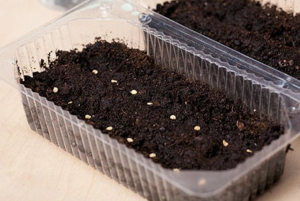 For seedlings, Ultra F1 seeds can be sown at the end of February and beginning of March (depending on the climatic conditions of the region), one and a half to two months before landing in the ground. It is good to first soak the seeds for forty minutes in a saturated pink solution of potassium permanganate, then for a day in water. Water should be changed periodically (every four to five hours).
For seedlings, Ultra F1 seeds can be sown at the end of February and beginning of March (depending on the climatic conditions of the region), one and a half to two months before landing in the ground. It is good to first soak the seeds for forty minutes in a saturated pink solution of potassium permanganate, then for a day in water. Water should be changed periodically (every four to five hours).
Then, drain the water, dry the seeds on a paper napkin or paper towel. It should be planted in the seedling boxes to a depth of 1-1.5 cm. You can spread out the swollen seeds on the soil well moistened in containers, then sprinkle with soil.
Watering shoots need to be careful, better between rows. When the seedlings grow a little, it should begin to harden: on warm days, take out the boxes to the fresh air, it is better first in cloudy weather, then you can in the sun. Every day it is useful to leave boxes with seedlings for a longer time. It should be planted in the ground when the soil is warm enough and there will be no threat of frost.
Seeds immediately to the ground
Sow the seeds in the soil should be when it warms up enough to young seedlings do not freeze while they are still weak. Seed treatment is the same as seedlings. However, this method is also very rare in the south. Seedlings are still safer.
See also: Tomato "Pink Honey" characteristic and description of the variety
Distance
Between bushes should be about 50 cm.It is better to plant tomatoes in a square-nested way - this provides the bushes with better lighting, ventilation and the necessary food area. Rows are better to have from north to south, then the bushes will be better and longer illuminated by the sun.
 Ultrafast F1 can grow in the shade, but then the tomatoes will ripen longer.
Ultrafast F1 can grow in the shade, but then the tomatoes will ripen longer.
The soil between the rows must be periodically loosened, especially after rains or after watering. It is possible after planting seedlings in between rows sow mustard. Mustard rises very quickly, inhibits weeds, enriches the soil with nitrogen. When the mustard grows enough leaves, they can simply be dug into the soil during the hilling process of the tomato bushes. The resulting organic green mass of mustard is an excellent fertilizer for tomato plants.
Watering
Watering the bushes of tomatoes is best at sunset. Water is useful rain or settled, not cold. It is necessary to water in the aisle, shedding abundantly to a depth of about a bayonet of a shovel. Watering is necessary when the soil dries. Excessive moisture is very harmful for tomatoes, because it provokes the spread of various rot and other diseases. The soil under the tomatoes must be maintained in a moderately moist state.
Tying up
 Pegs for tying up is better to drive into the holes when the seedlings are planted. Then the roots of the plants will be less damaged. When the bushes are old enough, they can be tied to the supports. For tying, you need to use soft material (ribbons made of cloth, old knee-highs or tights, soft wide wire, etc.), not tied tightly so as not to damage or tighten the trunks of the bushes.
Pegs for tying up is better to drive into the holes when the seedlings are planted. Then the roots of the plants will be less damaged. When the bushes are old enough, they can be tied to the supports. For tying, you need to use soft material (ribbons made of cloth, old knee-highs or tights, soft wide wire, etc.), not tied tightly so as not to damage or tighten the trunks of the bushes.
Tying up provides the bushes of tomatoes with better ventilation, lighting, and easier harvesting. Bushes, tied to supports, do not bend or break from the wind. They are easier to spud, weed, water.
Top dressing
Tomato is useful to feed in the growth and formation of ovaries phosphate, nitrogen and potash fertilizers. However, here it should be noted: it is impossible to overfeed the plants.
You will be interested in: What does the taste of tomatoes depend on, how to get a fragrant crop?
Harvesting
 To collect ripe fruit Ultra-ripening tomato F1 can be removed almost simultaneously, because this variety ripens very well. If the bushes are still unripe fruits, it is useful to leave one or two ripe tomatoes for three or four bushes. Ripe tomatoes produce ethylene, which “infects” the green fruits with their ripeness and they ripen faster. Ultra-ripening F1 variety tomatoes are not harvested for ripening, because the bushes have time to give their entire crop before the onset of autumn.
To collect ripe fruit Ultra-ripening tomato F1 can be removed almost simultaneously, because this variety ripens very well. If the bushes are still unripe fruits, it is useful to leave one or two ripe tomatoes for three or four bushes. Ripe tomatoes produce ethylene, which “infects” the green fruits with their ripeness and they ripen faster. Ultra-ripening F1 variety tomatoes are not harvested for ripening, because the bushes have time to give their entire crop before the onset of autumn.
From the experience of gardeners, gardeners
Tomato Ultrafast F1 is very popular among summer residents, gardeners and farmers engaged in the production of early products, reviews and photos fully confirm the remarkable characteristics of this variety.
With the observance of the very simple rules of agrotechnical tomato Ultra-ripening F1 can give a harvest even earlier than usual and more, better quality. This tomato is great for getting early harvest.
Video: Caring for tomatoes. First important steps


